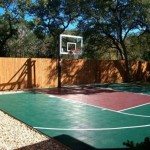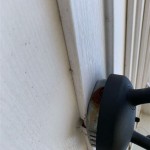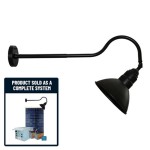```html
Motion Sensing Outdoor Lighting: Enhancing Security and Efficiency
Motion sensing outdoor lighting has become a prevalent feature in residential and commercial properties, offering a multifaceted approach to security, convenience, and energy conservation. These systems, triggered by movement within a specified range, provide illumination where and when it is needed. Understanding the different aspects of motion sensing technology, available lighting options, and installation considerations is crucial for effective implementation. This article aims to provide a comprehensive overview of motion sensing outdoor lighting, exploring its benefits, variations, and best practices.
Benefits of Motion Sensing Outdoor Lighting
The primary advantage of motion sensing lights lies in their enhanced security capabilities. By automatically illuminating when movement is detected, these lights deter potential intruders and alert occupants to activity in their surroundings. The sudden burst of light can startle someone attempting to trespass, effectively discouraging unwanted attention. This is particularly beneficial in areas with limited visibility, such as backyards, side passages, and garages.
Beyond security, motion sensing lights contribute significantly to energy efficiency. Traditional outdoor lights often remain illuminated for extended periods, consuming unnecessary energy. Motion sensors ensure that lights are only activated when needed, minimizing energy waste and reducing electricity bills. This is especially relevant for properties with large outdoor spaces, where continuous illumination would result in substantial energy consumption.
Convenience is another key benefit of these systems. Motion sensing lights provide hands-free illumination, making it easier to navigate pathways, steps, and doorways in the dark. This is particularly useful when carrying groceries, unlocking doors, or simply moving around the property at night. The automatic activation eliminates the need to manually switch lights on and off, adding a layer of convenience to everyday activities.
Types of Motion Sensor Technologies
Several technologies are employed in motion sensing lights, each with its own characteristics and suitability for different applications. Understanding these technologies is essential for selecting the most appropriate system.
Passive Infrared (PIR) sensors are the most common type. These sensors detect changes in infrared radiation emitted by objects in their field of view. When a warm object, such as a person or animal, moves within the sensor's range, it registers the change in infrared levels and triggers the light. PIR sensors are generally reliable and cost-effective, making them a popular choice for residential applications. Their effectiveness can be affected by extreme temperature changes, causing potential false triggers.
Microwave sensors, also known as radar sensors, emit microwave radiation and detect changes in the reflected signal. These sensors are more sensitive than PIR sensors and can detect movement through walls and other obstacles. However, this increased sensitivity can also lead to more false triggers, especially in areas with frequent movement or interference. Microwave sensors are often used in commercial and industrial settings where long-range detection is required.
Dual-technology sensors combine PIR and microwave technologies to reduce false triggers. These sensors require both technologies to detect movement simultaneously before activating the light. This combination significantly improves accuracy and reliability, making dual-technology sensors a good choice for areas prone to false alarms.
Choosing the Right Lighting Fixture and Bulb
The selection of the appropriate lighting fixture and bulb is crucial for optimizing the performance and aesthetic appeal of motion sensing outdoor lights. Various options are available, each with its own benefits and drawbacks.
LED (Light Emitting Diode) bulbs are the most energy-efficient option. They consume significantly less energy than traditional incandescent or halogen bulbs and have a much longer lifespan. LED bulbs are also available in a wide range of color temperatures and brightness levels, allowing for customization to suit specific needs. Their instant-on capability is particularly well-suited for motion sensing applications.
Halogen bulbs offer a brighter light output than incandescent bulbs but are less energy-efficient than LED bulbs. They also have a shorter lifespan and generate more heat. While they were once a popular choice, they are gradually being replaced by more efficient LED alternatives due to energy regulations and consumer preference for cost-effective solutions.
Fixture styles vary widely, from traditional lanterns to modern spotlights. The choice of fixture should complement the architectural style of the property and provide adequate coverage for the desired area. Consider factors such as weather resistance, durability, and ease of maintenance when selecting a fixture.
Proper Installation and Placement
Correct installation and placement are paramount for ensuring the effectiveness of motion sensing outdoor lights. Improper installation can lead to reduced range, false triggers, and compromised security.
Mounting height is a critical factor. Lights should be mounted at a height that provides adequate coverage without being easily accessible for tampering. Typically, a height of 8 to 10 feet is recommended for residential applications. The specific height may vary depending on the detection range and angle of the sensor.
The sensor's range and field of view should be considered when determining the placement of the light. The sensor should be positioned to cover the areas where motion detection is most critical, such as entrances, pathways, and vulnerable areas. Obstacles such as trees, bushes, and walls can obstruct the sensor's view, so it's essential to ensure a clear line of sight.
Wiring and electrical connections should be performed by a qualified electrician to ensure safety and compliance with local codes. Improper wiring can create a fire hazard or damage the lighting system. Ground fault circuit interrupters (GFCIs) should be used for outdoor circuits to protect against electrical shock.
Addressing Common Issues and Troubleshooting
Even with proper installation, motion sensing lights can sometimes experience issues that require troubleshooting. Understanding common problems and their solutions can help maintain optimal performance.
False triggers are a frequent problem, often caused by environmental factors such as wind, rain, or moving objects. Adjusting the sensitivity of the sensor or repositioning the light can help reduce false triggers. Ensuring that the sensor is not facing a busy street or an area with frequent animal activity can also minimize unwanted activations.
Lights that fail to activate when motion is detected may indicate a faulty sensor or a problem with the wiring. Check the batteries if the lights are battery-powered, and ensure that the wiring connections are secure. Replacing the sensor or consulting with an electrician may be necessary if the problem persists.
Lights that remain on continuously may be caused by a faulty sensor or a setting that has been inadvertently changed. Check the sensor settings to ensure that the light is set to automatically turn off after a specific period. Replacing the sensor may be necessary if the issue continues.
Integration with Smart Home Systems
Motion sensing outdoor lights can be integrated with smart home systems to enhance their functionality and provide greater control. This integration allows users to remotely monitor and control their lights, receive notifications when motion is detected, and automate lighting schedules.
Smart motion sensors can be connected to a central hub, such as a smart home hub or a Wi-Fi enabled lighting control system. This allows users to control their lights from a smartphone or tablet, regardless of their location. They can also set up automated rules, such as turning on lights at dusk or turning them off at dawn.
Smart motion sensing lights can also be integrated with security systems to provide enhanced protection. When motion is detected, the system can send notifications to the user's smartphone, trigger an alarm, or activate security cameras. This integration provides a comprehensive security solution that protects the property from potential threats.
The compatibility of the motion sensing lights with the specific smart home system is essential. Ensure that the lights are compatible with the chosen platform and that the necessary software or apps are installed. Following the manufacturer's instructions for integration is crucial for establishing a seamless connection.
Maintenance and Longevity
Regular maintenance is essential for ensuring the longevity and optimal performance of motion sensing outdoor lights. Simple maintenance tasks can prevent problems and extend the lifespan of the lighting system.
Periodically cleaning the sensor lens with a soft cloth can remove dust, dirt, and debris that can interfere with its performance. Avoid using harsh chemicals or abrasive cleaners that could damage the lens. Regularly check the wiring connections to ensure that they are secure and free from corrosion. Loose or corroded connections can cause malfunctions and reduce the lifespan of the lights.
Replacing bulbs as needed is important for maintaining consistent illumination. When replacing bulbs, use the correct type and wattage specified by the manufacturer. Using the wrong bulbs can damage the fixture or reduce its lifespan.
By following these maintenance guidelines, property owners can ensure that their motion sensing outdoor lights provide reliable security, energy efficiency, and convenience for many years.
```
Oberlin 9 High Black Finish Dusk To Dawn Motion Sensor Outdoor Light 5y111 Lamps Plus

Lnc Modern Black Motion Sensing Outdoor Sconce With Seeded Glass Shade Farmhouse 1 Light Front Door Wall Lantern 2 Pack Ev26jrhd1745dg8 The Home Depot

Auraglow Pir Motion Sensor Up Down Outdoor Wall Security Light Warminster Stainless Steel Led Lighting

Defiant 180 Degree Motion Sensor White Outdoor Security Light Df 5416 Wh A The Home Depot

Dusk To Dawn Motion Sensor Outdoor Porch Lights With Gfci Waterproof Light Fixture Anti Rust Exterior Wall Mount 3 Modes For House Garage Bulb Not Included Com

John Timberland Deaver 15 1 4 Broe Motion Sensor Outdoor Wall Light 33h55 Lamps Plus

The Best Outdoor Motion Sensor Lights In 2024 Popular Science

Gough 12 1 2 High Black Motion Sensor Outdoor Barn Wall Light 92d65 Lamps Plus

Varennes Fixed Matt Black Pir Motion Sensor Outdoor Lantern Wall Light 60w Diy At B Q

Hampton Bay Alexandria 17 3 In Black Farmhouse 180 Degree Motion Sensor Outdoor 1 Light Wall Sconce Hbi 4192 Bk The Home Depot
Related Posts







